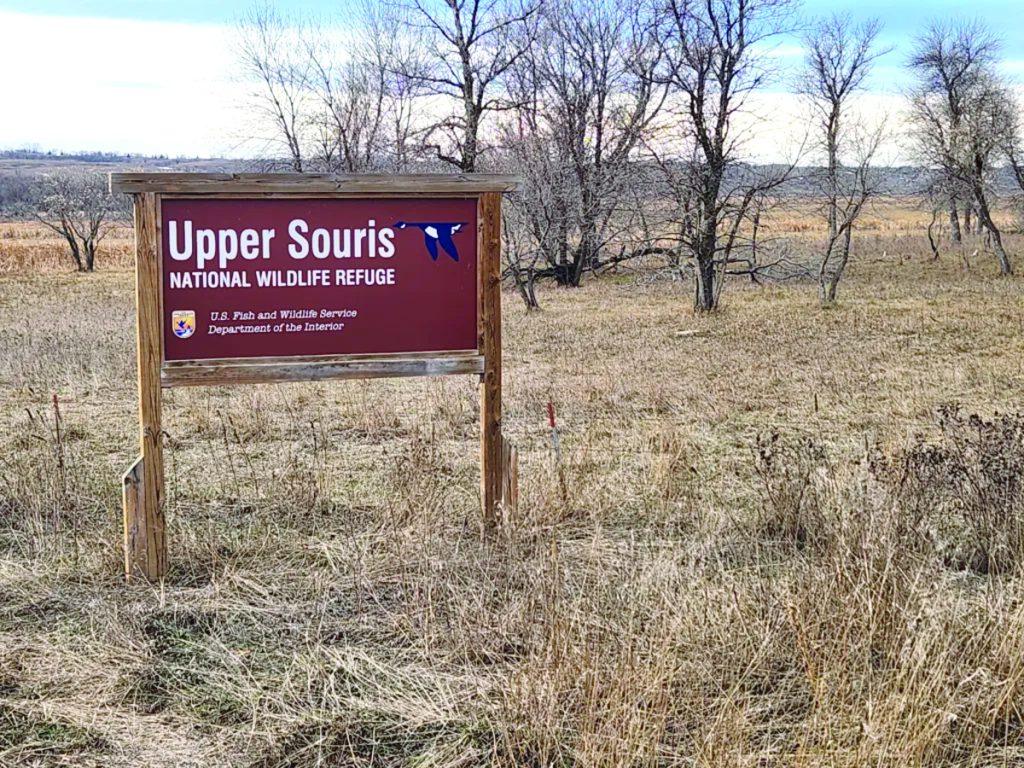Minot is situated within a short drive of several National Wildlife Refuges, each with their own diversity of habitat. They are managed for wildlife and for compatible public use.
Upper Souris NWR has public use areas for shore fishing, maintains boat ramps for open water fishing on Lake Darling, allows for ice fishing and dark house spearfishing. There’s a canoe route below Lake Darling Dam, hiking trails and, when the season allows, a scenic auto tour route that offers excellent views of the refuge and river valley.

While Upper Souris is the nearest NWR to Minot, others within an hour drive are Audubon, J. Clark Salyer, and Des Lacs. All have opportunities for public use, summer and winter. Hunting, fishing, hiking, driving are all ways to enjoy what our NWR’s have to offer.
One of my “never forget” moments happened on a marsh below Lake Darling Dam on the Upper Souris NWR. I was doing a story for television on the purpose of marsh management on the refuge. A biological technician used an airboat to take me on a tour, to show me life on the marsh.
It was fascinating. We encountered birds I never knew were in North Dakota. I saw my first, and only, Virginia rail. I was introduced to black-crowned night herons too and numerous other residents of the marsh.
Then, as the airboat turned toward an elevated nesting basket, we could see a Canada goose lying flat on top of it. We approached slowly. The goose stood up, then dropped down onto the water below. It feigned injury, an act we knew meant she hoped to divert us from the nest.
A moment later we stood up in the airboat to see inside the nesting basket. A couple of young geese had just hatched. More were pipping their way out of their eggs. Momma goose stayed with a few feet of us.
We watched as a yellow gosling, wet and soggy appearing, worked to remove the top of an egg and enter the world. The gosling did so. To our astonishment, still seated inside the bottom half of the shell, the gosling, not a minute old, snatched up a bug that was crawling on a piece of eggshell.
As we backed away after watching for only a few minutes the mother goose flew back up onto the nest. That is a slice of life I think about every time I drive past an NWR.
The presence of wildlife has changed at our refuges over the past several years. Sometimes more, sometimes less. But the value of having land set aside for wildlife is always there, even more so as more and more habitat essential for the survival of many species, large and small, seen and unseen, is changed forever.
Our refuges, once thought of as existing only for migratory waterfowl, are now recognized as “refuges” for diminishing varieties of shorebirds and songbirds, butterflies, native plants, and more. They serve as places of learning for students pursuing careers in biology, agriculture, land management, and more.
Now it’s the winter season and seasonal species have moved out of North Dakota. The landscape gets that bleak and foreboding look, but it is the time of year when our NWR’s often offer the only sanctuary available to wintering wildlife.
This year our winter started with an early and deep dump of snow but, with the effect of El Nino, warmer temperatures led to the melting of the initial snowpack. While daytime temperatures have been quite mild for several weeks, there’s no escaping winter’s presence. Even in an El Nino winter we’ll get our share of the fourth season.
Our refuges provide protective habitat necessary for wildlife survival during our challenging winter months, woodlands and grasslands providing shelter from icy winds. Then, in the spring, the land comes to life again. Migrating birds return. Deer give birth to fawns and birds of all kinds nest successfully. All illustrate the importance of our National Wildlife Refuge system.












